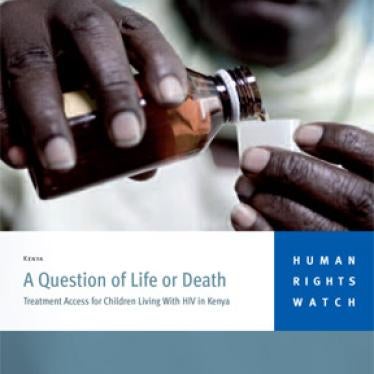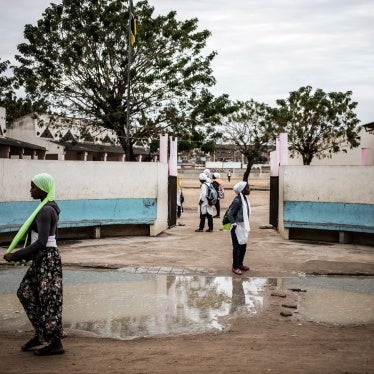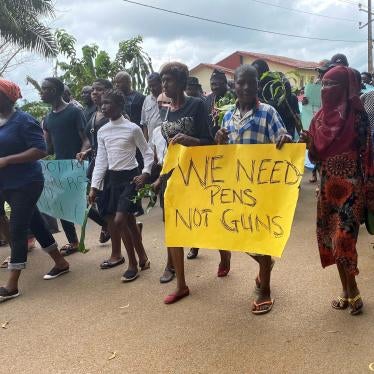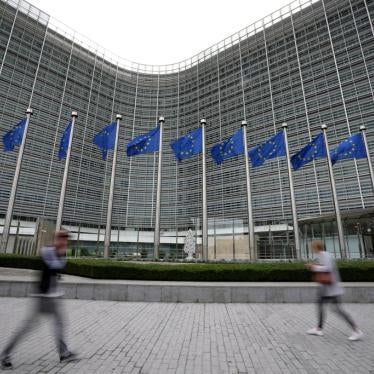James, like many HIV-positive orphans in Kenya, went to live with a relative when his parents died of AIDS.
"He saw me as a burden," James told Juliane Kippenberg, a senior researcher in the Children's Rights Division, of the uncle who became his guardian. "He told me I should have died instead of my parents."
James was frequently beaten and ran away repeatedly to different suburbs outside Nairobi, sleeping on the street and in the forest, begging to survive. He slept in a tea kiosk for several months, was at one point arbitrarily detained by the police for a week, and landed temporarily in a children's home.
Although antiretroviral treatment (ART) has been free in Kenya since 2006, James was not able to access the life-saving drugs.
Our December 2008 report on barriers to treatment for children living with HIV revealed that neither the Kenyan government nor donors had a solid understanding of how the lack of child protection was undermining access to health care for children like James. We exposed how policies focused largely on treatment for adults and neglected children. For example, ART for adults was available in many lower-level health facilities but the drugs were not available for children. Additionally, many children were falling through the cracks and not being tested.
We interviewed HIV-positive children, parents, orphans, and guardians of orphans, in addition to health professionals, social workers, and volunteers who provide home-based care for people living with HIV/AIDS. We also then met the minister of medical services, the minister for gender and children, affairs, the head of the National AIDS Control Council, other government representatives, Kenyan and international NGOs working on HIV and children's rights, and donors.
Ongoing stigma about AIDS means people fear disclosing their HIV-positive status and do not always let children know when they have tested positive. Many HIV-positive women and children become victims of property grabbing and expulsion from their homes by landlords or relatives. As a result of their status they end up living in squalor, and children often face neglect. Orphans, such as James, sometimes suffer severe abuse on the part of their caregivers. Some have even been refused treatment.
Based on these findings, Human Rights Watch was able to bring together key actors from governments, local NGOs and health care providers, and the media. The debate in Kenya gained further momentum when Kenya Ethical and Legal Issues Network, a national organization, held an advocacy workshop on the issues with government and NGO representatives.
The Kenyan government's National Aids Control Council welcomed recommendations we submitted for its new HIV/AIDS strategy. One of the officials leading the strategic review told Kippenberg that our report "...significantly filled the gap in child right's issues witnessed during the Strategic Review process." Alongside pressure from Kenyan civil society, Human Rights Watch's report helped get a more rights-oriented Kenya National HIV/AIDS Strategic Plan into place.
During a follow-up mission Kippenberg documented a 40 percent increase in the number of children receiving ART-from 20,000 in mid-2008 to 28,000 by the end of 2009. The number of child protection officers in Kenya has also increased dramatically since the report's publication-from 85 in mid-2008 to approximately 300 by the end of 2009.
James eventually found his way to a small shelter where he was able to receive ART and other medical care though a community project. For him, and for a growing number of others, it might not be too late.







